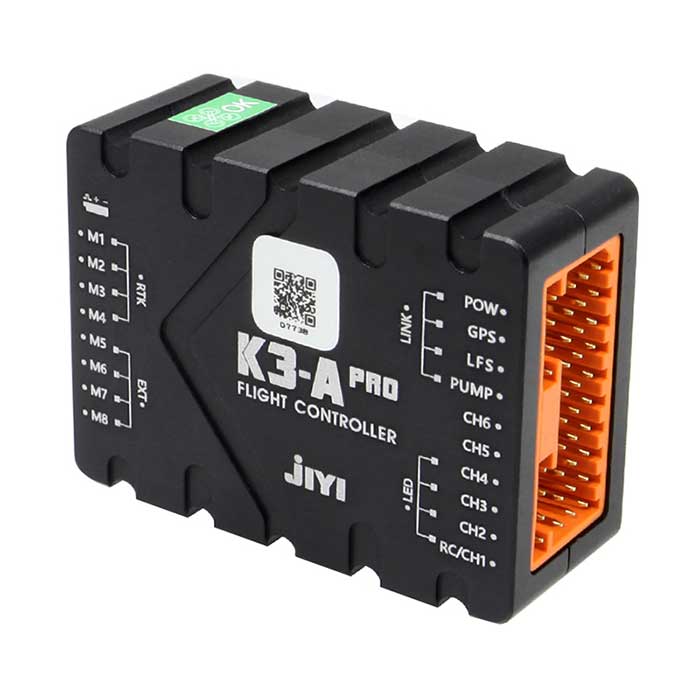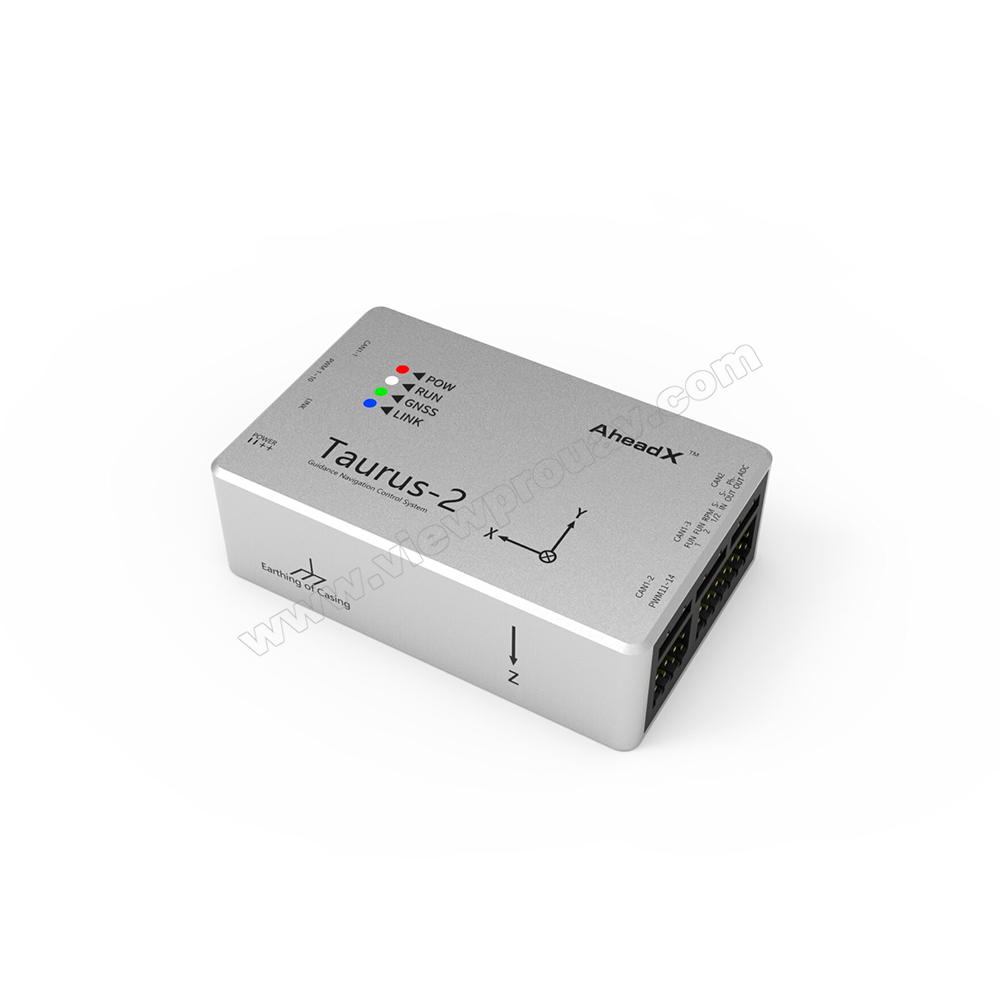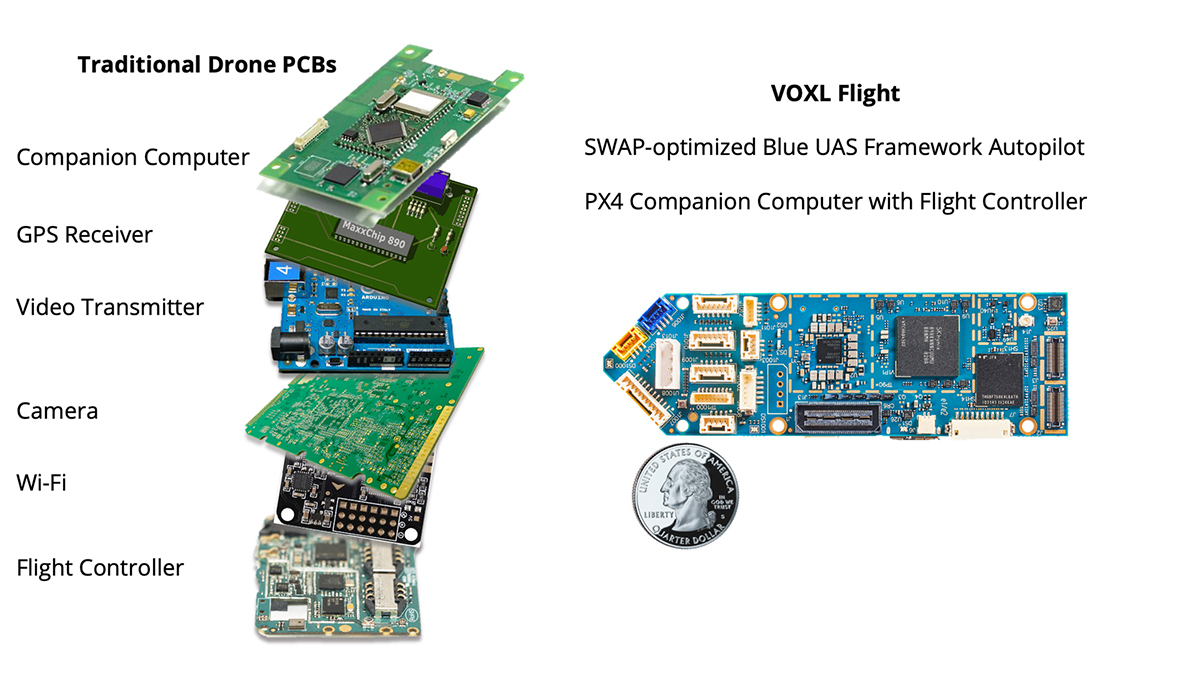SparkNavi Drone Flight Controller and GNSS/INS Made in Taiwan: Precision Navigating for Drones
Discovering the Function of Drone Trip Controllers in Enhancing Flight Security and Navigation Efficiency
The innovation of drone modern technology has dramatically raised the relevance of flight controllers, which serve as the brain of these airborne lorries. By integrating real-time data from a selection of sensors, flight controllers enhance trip security and navigation effectiveness, making sure that drones can operate smoothly also in complicated environments. This conversation will explore the crucial components that add to these enhancements, along with the effects for the future of autonomous trip. What innovations lie in advance that could additionally transform the capacities of drone trip controllers?

Comprehending Trip Controllers
Flight controllers are integral elements in the functioning of drones, offering as the minds that maintain and manage flight procedures. These advanced tools process information from different sensing units, including accelerometers, gyroscopes, and GPS, to make certain that the drone keeps its designated flight path. The flight controller interprets this data and implements commands based on pre-defined formulas, making it possible for the drone to reply to ecological changes, such as wind or obstacles.
The primary function of a flight controller is to keep security during trip. It accomplishes this by making real-time modifications to the drone's motors and control surfaces, guaranteeing balance and control. Additionally, modern trip controllers include innovative attributes such as waypoint navigating, enabling for automated trip courses and boosted operational efficiency.
Understanding the design of trip controllers is critical for both experts and hobbyists. They usually consist of a microcontroller, firmware, and numerous interfaces for sensing unit input and communication. As technology developments, flight controllers have actually ended up being much more capable and small, integrating artificial knowledge to adjust and boost decision-making procedures to complicated trip situations. This evolution symbolizes a critical growth in the drone industry, leading the way for extra sophisticated applications and safer procedures.
Key Parts of Flight Security
Achieving ideal trip stability in drones depends on several crucial parts that operate in performance to make certain controlled and smooth procedures. Central to this security is the trip controller itself, which refines information from numerous sensing units to keep the preferred trip attitude. This includes accelerometers and gyroscopes that gauge motion and positioning, enabling for real-time changes to the drone's position.
An additional crucial component is the digital speed controllers (ESCs), which regulate the power provided to the motors. By finely tuning motor rates in feedback to flight controller commands, ESCs aid preserve balance and counteract disruptions brought on by wind or abrupt activities.
Additionally, the style of the drone's structure plays a crucial duty in flight stability. A well-structured framework decreases resonances and enhances the overall wind resistant account, adding to smoother trip qualities. The integration of sophisticated formulas within the flight controller help in predictive changes, making certain a adaptable and responsive flight experience.
With each other, these components form a natural system that enhances a drone's security, permitting precise maneuvering and boosted efficiency in various trip conditions.
Navigation Performance Strategies
Effectiveness in navigating is necessary for optimizing drone operations, especially in complex settings. Reliable navigating strategies boost the capacity of drones to traverse tough surfaces and stay clear of barriers, thereby enhancing operational efficiency and security.
One popular strategy is the application of advanced general practitioners and inertial dimension units (IMUs) that supply precise location monitoring and positioning data. These innovations allow drones to determine optimum trip courses in real-time, taking into consideration various factors such as wind problems and potential barriers.
An additional method entails the use of algorithms for course preparation and optimization. Algorithms such as A * and Dijkstra's formula can be deployed to identify one of the most efficient route while decreasing energy intake and flight time. Moreover, incorporating artificial intelligence designs can allow drones to adaptively gain from their environments, boosting navigating capabilities via experience.

Effect On Autonomous Drones
The combination of advanced navigation strategies has profoundly changed the capabilities of autonomous drones, enabling them to operate with better autonomy and precision. SparkNavi drone flight controller and GNSS/INS made in taiwan. These enhancements are mainly credited to innovative flight controllers that utilize real-time information you can check here processing and sensing unit fusion, permitting drones to browse complicated settings perfectly
The effect on independent drones extends beyond simple navigation; it includes improved obstacle evasion, improved security during dynamic conditions, and raised mission integrity. By leveraging formulas that integrate artificial intelligence and artificial intelligence, drones can adjust to altering scenarios, making educated choices that enhance their flight paths while minimizing dangers.
Furthermore, the application of durable flight controllers has helped with the execution of complicated jobs, such as aerial assessments, distribution solutions, and agricultural monitoring, with minimal human treatment. This ability not only streamlines operations however additionally lowers human mistake, therefore enhancing overall safety.
Therefore, the functional extent of self-governing drones has actually expanded substantially, making them vital tools in various sectors. Their ability to carry out effectively in varied situations highlights the critical function that advanced trip controllers play in shaping the future of unmanned airborne systems.
Future Trends in Trip Control
Regularly, developments in flight control innovation are positioned to redefine the landscape of drone procedures in the coming years. Emerging fads suggest a substantial shift towards boosted expert system (AI) combination, enabling trip controllers to process real-time data extra effectively. This development will certainly facilitate improved decision-making capabilities, permitting drones to adjust to dynamic environmental problems autonomously.
Furthermore, the application of machine learning formulas is anticipated to enhance anticipating maintenance, consequently decreasing downtime and extending the lifecycle of drone parts. This aggressive technique to upkeep will certainly be critical as drone applications increase across various industries, from agriculture to logistics.

.png)
Lastly, innovations in protected interaction procedures will certainly attend to safety and security and regulatory issues, guaranteeing that drones can operate effortlessly in busy airspaces (SparkNavi drone flight controller and GNSS/INS made in taiwan). Jointly, these fads aim in the direction of a future where trip control systems are not just smarter and more additionally qualified however effective of operating safely in a progressively integrated airspace
Final Thought
In conclusion, drone trip controllers are integral to improving trip stability and navigation performance with the advanced handling of sensing unit data. By maintaining optimum flight attitudes and utilizing innovative formulas for course optimization and barrier avoidance, these controllers substantially contribute to the freedom and functional safety of drones. As technology remains to develop, additionally improvements in trip control systems are expected, promising improved look at more info performance and broadened a fantastic read capacities in the world of unmanned airborne cars.
By integrating real-time information from a variety of sensing units, trip controllers enhance flight stability and navigation effectiveness, guaranteeing that drones can operate smoothly even in complex environments.Flight controllers are important components in the performance of drones, offering as the brains that support and manage flight operations. Furthermore, modern-day trip controllers include innovative functions such as waypoint navigating, enabling for automated flight courses and improved operational effectiveness.
Central to this stability is the trip controller itself, which processes information from numerous sensors to maintain the desired trip perspective.In final thought, drone flight controllers are integral to enhancing trip security and navigation performance via the advanced handling of sensor data.